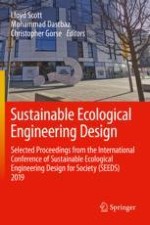2020 | OriginalPaper | Buchkapitel
Responsible Retrofit Measures for Traditional Listed Dwellings: An Energy Simulation Validation Strategy
verfasst von : Michela Menconi, Noel Painting, Poorang Piroozfar
Erschienen in: Sustainable Ecological Engineering Design
Aktivieren Sie unsere intelligente Suche, um passende Fachinhalte oder Patente zu finden.
Wählen Sie Textabschnitte aus um mit Künstlicher Intelligenz passenden Patente zu finden. powered by
Markieren Sie Textabschnitte, um KI-gestützt weitere passende Inhalte zu finden. powered by
